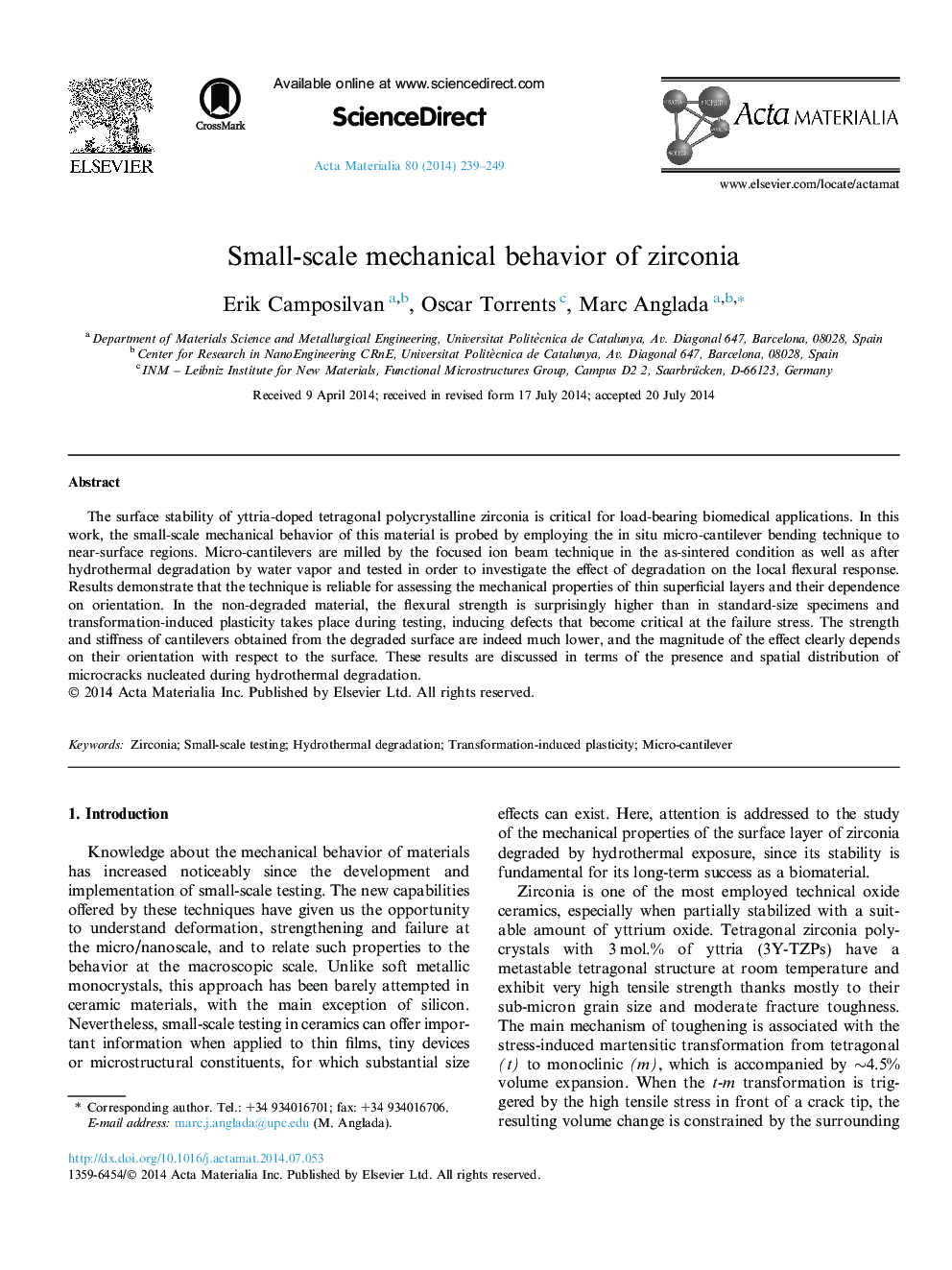| Article ID | Journal | Published Year | Pages | File Type |
|---|---|---|---|---|
| 7881119 | Acta Materialia | 2014 | 11 Pages |
Abstract
The surface stability of yttria-doped tetragonal polycrystalline zirconia is critical for load-bearing biomedical applications. In this work, the small-scale mechanical behavior of this material is probed by employing the in situ micro-cantilever bending technique to near-surface regions. Micro-cantilevers are milled by the focused ion beam technique in the as-sintered condition as well as after hydrothermal degradation by water vapor and tested in order to investigate the effect of degradation on the local flexural response. Results demonstrate that the technique is reliable for assessing the mechanical properties of thin superficial layers and their dependence on orientation. In the non-degraded material, the flexural strength is surprisingly higher than in standard-size specimens and transformation-induced plasticity takes place during testing, inducing defects that become critical at the failure stress. The strength and stiffness of cantilevers obtained from the degraded surface are indeed much lower, and the magnitude of the effect clearly depends on their orientation with respect to the surface. These results are discussed in terms of the presence and spatial distribution of microcracks nucleated during hydrothermal degradation.
Keywords
Related Topics
Physical Sciences and Engineering
Materials Science
Ceramics and Composites
Authors
Erik Camposilvan, Oscar Torrents, Marc Anglada,
